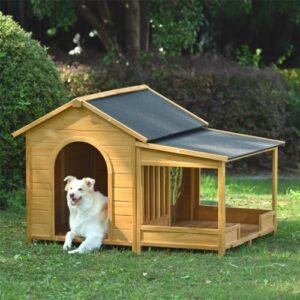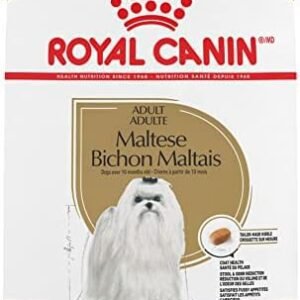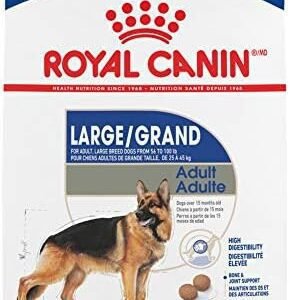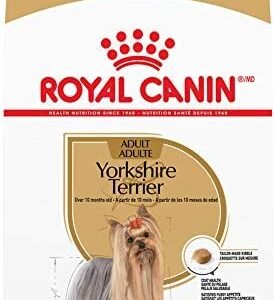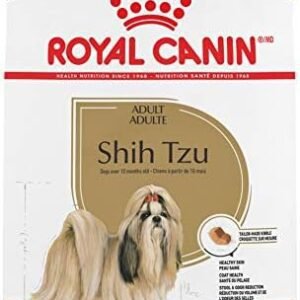Introduction
Dogs, our cherished companions, often sit at our feet, watching with eager eyes as we savor a delightful meal. It’s not uncommon for pet owners to wonder, can dogs enjoy the same delicacies we do, like tuna? This question isn’t merely a matter of culinary curiosity; it delves deep into the realms of canine health and nutrition. In this comprehensive exploration, we’ll navigate the intricate pathways of canine dietary needs and the potential impact of introducing tuna into their diet.
Every pet owner understands the unspoken bond shared with their furry friend. Our dogs are not just pets; they’re part of our families, and their well-being is paramount. As responsible pet parents, it’s crucial to be well-informed about what our dogs can and cannot eat. Tuna, a popular choice among seafood enthusiasts, raises a pertinent question: can dogs safely indulge in this oceanic delight?
Table of Contents
The Importance of Canine Dietary Awareness
Understanding our canine companions’ nutritional requirements is pivotal to ensuring their health and happiness. Dogs, like humans, have specific dietary needs encompassing proteins, fats, carbohydrates, vitamins, and minerals. Proteins are the building blocks of life, fostering muscle development and repair. Fats provide concentrated energy, carbohydrates offer sustained vitality, and vitamins and minerals play multifaceted roles, bolstering immune systems and maintaining sturdy bones and teeth.
Decoding Tuna’s Nutritional Profile

Tuna, often hailed for its richness in proteins, Omega-3 fatty acids, and an array of vitamins and minerals, is a culinary delight for many. These nutrients are undoubtedly beneficial for humans, but the pivotal question remains: are they equally advantageous for our canine counterparts?
Navigating the Mercury Minefield
One of the foremost concerns associated with feeding tuna to dogs is the specter of mercury contamination. Mercury, a toxic heavy metal, tends to accumulate in larger fish such as tuna, posing severe health risks, especially neurological problems, when ingested. Thus, understanding the source and quality of the tuna becomes paramount when considering it as a part of your dog’s diet.
Allergies: A Potential Hurdle
Dogs, akin to humans, can develop allergies. Although rare, tuna allergies in dogs are not unheard of. Allergic reactions may manifest as itching, digestive issues, or even more severe symptoms. Introducing tuna cautiously and vigilantly observing your dog for any adverse reactions is prudent, especially if your canine companion has never tasted tuna before.
Weighing the Pros and Cons of Tuna in Your Dog’s Diet
The Protein Powerhouse
Tuna, being a protein-packed delicacy, can potentially serve as a valuable addition to your dog’s diet. High-quality proteins are instrumental in muscle growth, repair, and overall well-being. However, it’s crucial to note that while tuna can contribute to the protein intake, it should not replace the primary protein source in your dog’s regular diet. Balance and moderation are key.
Omega-3 Fatty Acids: A Boon for Canines
Rich in Omega-3 fatty acids, tuna offers an array of health benefits for our furry friends. These essential fatty acids are renowned for promoting improved coat conditions, reducing inflammation, and enhancing cognitive functions. Including tuna in your dog’s diet, albeit occasionally and in moderation, can offer these advantages, provided careful attention is paid to potential risks.
In the intricate tapestry of canine nutrition, the query “Can dogs eat tuna?” is met with a multifaceted response. While tuna offers valuable nutrients like proteins and Omega-3 fatty acids, the shadows of mercury contamination and potential allergies loom large. If you decide to introduce tuna into your dog’s diet, ensuring it is of high quality, properly cooked, and served in moderation is non-negotiable.
However, this decision shouldn’t be made in isolation. Consulting a knowledgeable veterinarian is paramount when contemplating significant alterations to your pet’s diet. By embracing the nuances of canine nutrition and making informed choices, you can pave the way for your beloved companion to lead a life filled with health, happiness, and tail-wagging delight.
Note: This article serves as a general guide and should not be considered a substitute for professional veterinary advice. Always consult with a qualified veterinarian regarding your pet’s dietary choices and overall health.
Can Dogs Eat Tuna? Understanding the Nutritional Landscape
Exploring the Canine Palate
The prospect of sharing a piece of tuna with our four-legged friends often raises questions. Is tuna safe for dogs to consume? Fortunately, plain, properly cooked tuna is not inherently toxic to dogs. In fact, some dogs might relish the unique taste of this seafood delight. However, it’s vital to understand that while tuna can be a part of your dog’s diet, it should not become a staple.

Nutritional Snapshot of Tuna
To comprehend the benefits and limitations of feeding tuna to our canine companions, let’s examine its nutritional content:
| Nutrient | Amount per 100g of canned tuna (in brine) | % Daily Value |
|---|---|---|
| Calories | 109 kcal | 5% |
| Protein | 24.9 g | 50% |
| Fat | 1.0 g | 2% |
| Carbohydrate | 0 g | 0% |
| Fiber | 0 g | 0% |
| Sugar | 0 g | 0% |
| Iron | 1.4 mg | 8% |
| Magnesium | 44.6 mg | 11% |
| Potassium | 391 mg | 8% |
| Selenium | 69 mcg | 125% |
| Vitamin B6 | 0.577 mg | 44% |
| Vitamin B12 | 4.93 mcg | 205% |
Tuna is undeniably rich in proteins, making it an excellent option for supporting muscle development and repair in dogs. Additionally, it boasts significant quantities of Omega-3 fatty acids, promoting a healthy coat, reduced inflammation, and enhanced cognitive function. Furthermore, it contains essential vitamins and minerals like Vitamin A, Vitamin B12, Selenium, and Phosphorus, all of which play crucial roles in maintaining overall canine well-being.
Treading Cautiously: Potential Drawbacks
However, as with any food, there are aspects that necessitate careful consideration. One primary concern is the mercury content in tuna, which, as discussed earlier, can lead to severe health issues in dogs. While the nutritional benefits are enticing, the potential risks underscore the importance of moderation.
Finding Balance: Tuna as a Supplement, Not a Substitute
While tuna presents nutritional advantages, it should never replace a balanced, high-quality commercial dog food diet. Instead, it should be viewed as an occasional treat or supplement,added to your dog’s diet in moderation. Dogs have specific dietary requirements, and relying solely on tuna can lead to imbalances in their nutrition.
In the intricate realm of canine nutrition, understanding the nuances of specific foods like tuna is paramount. While tuna brings a host of nutrients to the table, the caveat of mercury contamination and the possibility of allergies warrant prudence. By integrating this seafood delight responsibly and in moderation, you can enhance your dog’s diet with valuable nutrients. However, always consult your veterinarian before introducing any new food into your dog’s diet. In the delicate balance of taste and health, informed choices pave the way for a robust, happy, and tail-wagging canine companion.
Note: This article serves as a general guide and should not be considered a substitute for professional veterinary advice. Always consult with a qualified veterinarian regarding your pet’s dietary
How Much Tuna Can a Dog Eat? Finding the Right Balance
Moderation is Key
When it comes to sharing tuna with your canine companion, the golden rule is moderation. Treats, including tuna, should constitute only a small percentage of your dog’s daily calorie intake. While tuna can be a delightful addition to your dog’s diet, overindulgence can lead to adverse effects.
Start Small, Observe Closely
Before introducing tuna into your dog’s diet, it’s wise to start with a small piece. Watch your dog closely for any signs of allergies or adverse reactions. Even if your dog has had tuna before, every dog is different, and their tolerance levels can vary. Observing your dog’s response ensures you can make an informed decision about whether tuna agrees with their digestive system.
Proper Preparation Matters
Preparing tuna for your dog requires careful attention. Avoid seasoning, additives, or sauces that are commonly used in human recipes. Plain, cooked tuna is the safest option. Grilling, baking, or boiling are suitable cooking methods, ensuring the tuna is thoroughly cooked to eliminate any potential parasites or bacteria. Moreover, it’s crucial to remove all bones before offering it to your furry friend to prevent choking hazards.
Consider Your Dog’s Size and Breed
The amount of tuna your dog can tolerate depends significantly on their size and breed. Larger dogs, with their higher metabolism, may be able to handle a slightly larger serving compared to smaller breeds. It’s essential to be mindful of the portion size relative to your dog’s weight. For example, a Great Dane can naturally handle a larger piece of tuna compared to a Chihuahua.
Appropriate Serving Sizes
Determining the right serving size of tuna for your dog involves a delicate balance. As a general guideline, for a medium-sized dog (around 30-40 pounds), a small piece of tuna, approximately the size of a quarter, can be a suitable treat. For larger dogs, this portion can be adjusted accordingly, while for smaller dogs, even smaller portions are advisable.
In the tapestry of canine nutrition, understanding portion sizes is as crucial as knowing the food itself. Tuna, when served in moderation and prepared thoughtfully, can be a delectable and nutritious treat for your beloved pet. By observing your dog’s reactions, preparing the tuna carefully, and being mindful of portion sizes, you can strike the perfect balance between taste and health.
Remember, every dog is unique, and consulting with your veterinarian about your specific dog’s dietary needs and any concerns you might have is always a prudent step. With your keen observation and a touch of culinary care, you can treat your furry friend to the delights of tuna without compromising their well-being.
Understanding the Risks: Potential Hazards of Feeding Tuna to Dogs
Navigating Food Allergies
While tuna allergies in dogs are rare, they are not impossible. Just like humans, dogs can develop allergies to specific foods, including seafood like tuna. Food allergies occur when a dog’s immune system identifies certain proteins as harmful invaders, triggering an allergic response. If your dog is allergic to tuna, common symptoms may include itching, hives, swelling of the face or other body parts, diarrhea, vomiting, or difficulty breathing. If you notice any of these symptoms after your dog consumes tuna, it’s crucial to seek veterinary care promptly.
Short-term Signs of Food Intolerance
Apart from allergies, some dogs might experience short-term signs of food intolerance to tuna. Food intolerance differs from an allergy in that it does not involve the immune system. Instead, it occurs when a dog’s digestive system has difficulty processing specific food components. Gastrointestinal distress, such as upset stomach, diarrhea, or vomiting, can be short-term signs that your dog is intolerant to tuna. Monitoring your dog’s reactions after consuming tuna can help you identify these symptoms.
Potential Hazards in Tuna Components
Beyond allergies and food intolerance, certain components in tuna can pose risks to dogs. For example, if the tuna contains added spices, sauces, or other seasonings, these ingredients can be harmful to dogs. Onions and garlic, common seasoning ingredients, are toxic to dogs and can lead to serious health issues, including anemia. It’s crucial to ensure
Making Tuna a Delightful Addition: Creative Ways to Feed Tuna to Your Dog
Fresh or Frozen Treats
Tuna can be served to your canine companion in various delectable forms. One of the simplest ways is to offer it as a fresh or frozen treat. You can cut tuna into small, bite-sized pieces and freeze them for a refreshing and satisfying summer treat. Frozen tuna cubes can be a delightful, crunchy snack that also helps in soothing teething discomfort for puppies.
Tuna as a Food Topper or Mixer
Enhance your dog’s regular meals by using tuna as a food topper or mixer. Mixing a small portion of plain, cooked tuna with your dog’s kibble can add an enticing aroma and flavor, making the meal more appealing. This method is particularly useful if your dog is a picky eater or needs encouragement to finish their meals.
Homemade Treats and Snacks
Get creative in the kitchen and explore the world of homemade dog treats using tuna. You can prepare simple tuna treats by combining canned tuna with dog-friendly ingredients like sweet potatoes, carrots, and oats. Shape the mixture into small balls or use cookie cutters to create fun shapes. Bake them until they are golden brown, and you have homemade tuna dog treats that your furry friend will love.
Tuna-Stuffed Toys
Another innovative way to incorporate tuna into your dog’s routine is by using tuna-stuffed toys. There are specially designed toys that can be filled with a mixture of tuna and other dog-safe ingredients. These toys provide mental stimulation and entertainment for your dog while also rewarding them with a tasty treat as they work to extract the filling.
Enhancing Your Dog’s Dining Experience
Dogs, like humans, appreciate variety and flavors in their meals. By introducing tuna in creative ways, you can significantly enhance your dog’s dining experience. Experiment with different recipes, textures, and forms to keep mealtime exciting for your pet. Additionally, this approach can be especially helpful if your dog has a decreased appetite or is on a special diet, as the introduction of new tastes can pique their interest in food.
Recipes for Homemade Tuna Dog Treats
Recipe 1: Tuna and Sweet Potato Biscuits
Ingredients:
- 1 cup canned tuna, drained
- 1 cup mashed sweet potato
- 1 ½ cups whole wheat flour
Instructions:
- Preheat the oven to 350°F (175°C) and line a baking sheet with parchment paper.
- In a bowl, mix the tuna and mashed sweet potato until well combined.
- Gradually add the whole wheat flour, stirring until a dough forms.
- Roll out the dough on a floured surface and use cookie cutters to create shapes.
- Place the shaped biscuits on the prepared baking sheet.
- Bake for 15-20 minutes or until the biscuits are golden brown and firm to the touch.
- Let the treats cool completely before serving to your dog.
Recipe 2: Tuna and Carrot Frozen Popsicles
Ingredients:
- 1 cup canned tuna, drained
- 1 cup grated carrots
- 1 ½ cups low-sodium chicken broth
Instructions:
- Mix the tuna and grated carrots in a bowl.
- Fill ice cube trays or silicone molds halfway with the tuna-carrot mixture.
- Pour chicken broth over the mixture in the trays or molds, filling them to the top.
- Freeze the trays or molds for several hours or until the popsicles are completely frozen.
- Pop the frozen treats out of the trays or molds and serve them to your dog on a hot day.
Incorporating tuna into your dog’s diet can be a delightful experience for both you and your furry friend. By exploring these creative methods, you can offer your dog a diverse, flavorful, and nutritious diet. Remember to consult your veterinarian if you have any concerns about your dog’s dietary choices or health.
FAQs About Dogs Eating Tuna: Unraveling the Mysteries
As pet owners, we often find ourselves exploring various options to treat our dogs to something special. Tuna, being a popular and nutritious seafood choice, often raises questions among dog owners. Here are the top 10 frequently asked questions about dogs eating tuna, along with their detailed answers to help you make informed decisions regarding your furry friend’s diet:
1. Can dogs eat raw tuna?
Answer: While dogs are known to consume raw meat in the wild, feeding them raw tuna from your local grocery store is not recommended. Raw fish, including tuna, may contain parasites and bacteria that can be harmful to dogs. Cooking the tuna thoroughly helps eliminate these risks, making it safer for your pet to consume.
2. Is canned tuna safe for dogs?
Answer: Canned tuna can be safe for dogs, but with some caveats. Opt for tuna canned in water without added salt, oil, or seasonings. Also, ensure it is packed in water rather than oil, as oil-packed tuna can be high in calories and fat. Moderation is key, and remember that frequent consumption of canned tuna can lead to nutrient imbalances in your dog’s diet.
3. What are the signs of tuna allergy in dogs?
Answer: Tuna allergies in dogs, although rare, can manifest in various ways. Common signs include itching, hives, swelling, vomiting, diarrhea, and difficulty breathing. If you observe any of these symptoms after your dog consumes tuna, it’s essential to consult a veterinarian promptly.
4. Can dogs eat tuna bones?
Answer: No, dogs should not eat tuna bones. Fish bones can splinter and cause internal injuries, leading to serious health issues. Always remove bones thoroughly before offering tuna to your dog, ensuring their safety during consumption.
5. Can dogs eat tuna skin?
Answer: While the skin of some fish is safe for dogs, tuna skin can be tough and difficult for them to digest. It’s advisable to remove the skin to prevent any potential digestive problems or choking hazards.
6. Is tuna suitable for dogs with kidney problems?
Answer: Tuna, due to its high protein content, should be avoided for dogs with kidney problems. Dogs with kidney issues require a specific diet prescribed by a veterinarian. High protein intake, like that found in tuna, can put additional strain on compromised kidneys.
7. Can puppies eat tuna?
Answer: Puppies can eat tuna, but it should be given in moderation and cooked thoroughly to eliminate any potential health risks. Puppies have developing digestive systems, so introducing new foods, including tuna, should be done cautiously and in small quantities.
8. Can dogs eat tuna in brine?
Answer: Tuna in brine (saltwater solution) should be avoided for dogs. Excessive sodium intake can lead to sodium ion poisoning, causing symptoms like vomiting, diarrhea, tremors, seizures, and, in severe cases, death. Opt for tuna packed in water instead, and always check the label for added salt content.
9.Is tuna a suitable substitute for regular dog food? (H)
Answer: No




















